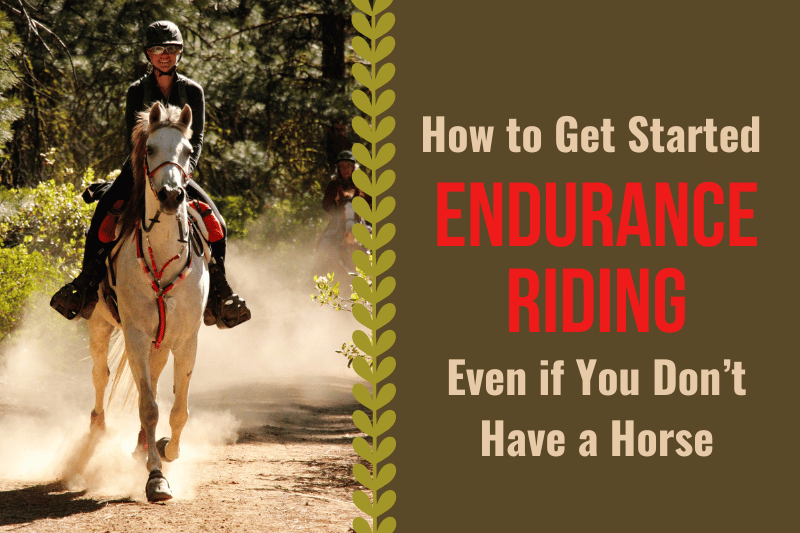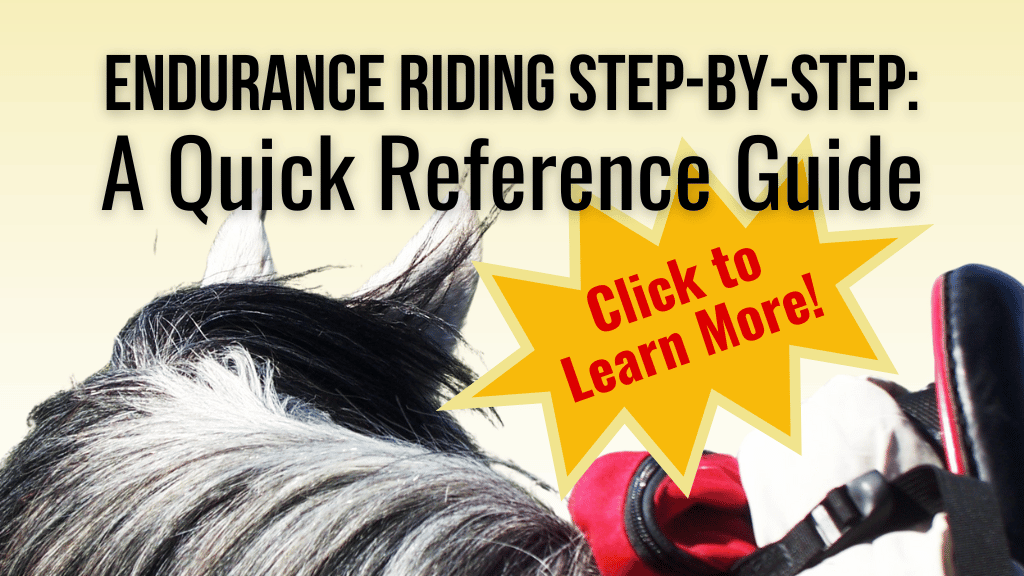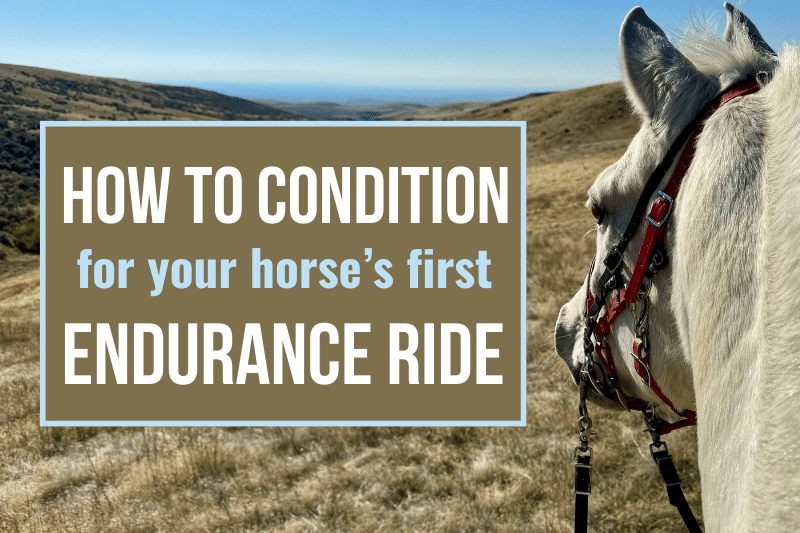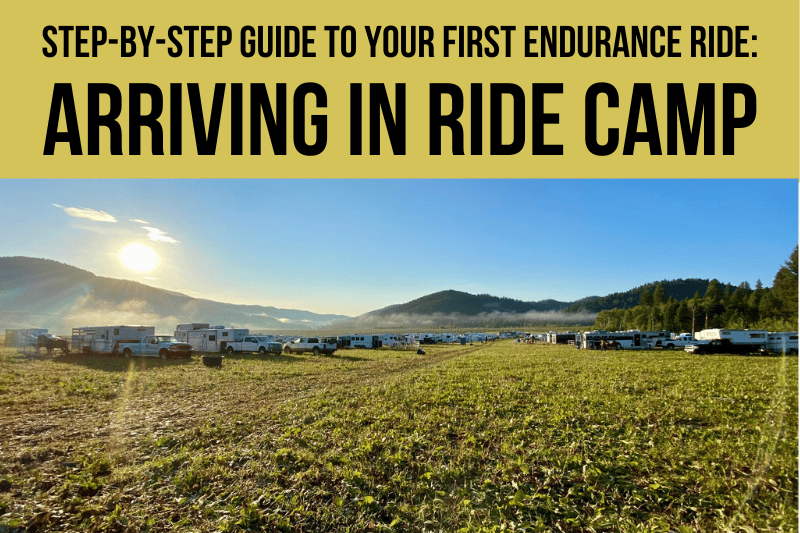Endurance riding is an exciting sport that welcomes riders of all ages and equines of all breeds. Getting started may seem daunting, but there are many ways to learn the ropes. Here’s how to get your foot in the door, even if you don’t have a horse.
Volunteer at an Endurance Ride
Endurance riding is a sport that runs on volunteers. More hands are always welcome, and there’s no better way to see the inner workings of an endurance ride than by spending your day helping out.
Common volunteer roles on ride day include:
Timer – The timer is responsible for noting when teams come into the hold, when they pulse down, and when they are allowed to leave on their next loop. This can be busy, tricky role, but there’s always someone willing to show you how it’s done. Timers have a front row seat to watch how the horses and riders are performing, plus there’s plenty of time to swap stories with the old timers (pun intended) between rushes.
Pulser – Pulsers are responsible for checking the heart rates of horses as they come into the hold. You’ll want to be familiar with the use of a stethoscope, wear a watch with a second hand, and know how to calculate an equine heart rate based on a 10-second listen. This role puts you up close with the horses and riders all day long.
Vet Scribe – Vet scribes jot down scores called out by the veterinarians as they check each horse’s soundness and metabolic parameters. This role offers a fascinating window into the nuances of the sport and the care that is taken to keep the horses safe.
Renaissance (Wo)man – If you don’t feel ready for a more “official” role, there’s always a need for folks who can help with miscellaneous tasks. This could range from helping fill water tanks or fetch hay to preparing dinner for the riders or simply holding horses while their riders run to the porta-potty.
It’s best to let the ride manager know ahead of time that you’ll be there to help, but it’s okay to just show up as well. You’re guaranteed to gather a lot of new information, not to mention new friends.
Crew for an Endurance Rider
Although it’s perfectly possible to ride endurance without crew, many competitors enjoy the luxury of having a dedicated individual or team to assist them. If you know an endurance rider, ask if they’d like you to crew them at their next event.
Crew members see the most action when their riders are in camp. They make sure both horse and rider have everything they need to recover and prepare for the next loop. Depending on the task your rider assigns, you might fill water bottles, prepare snacks, soak mashes, swap hoof boots, sponge sweat, swipe sunscreen, find a lost ride card, or check the ribbon color your rider needs to follow next.
Crewing will give you an intimate look at the inside of an endurance ride, including the trials and triumphs of your rider. As a bonus, you’ll have plenty of time to shoot the breeze with other crew and volunteers while your rider is on the trail.
Catch Ride
Catch riding is competing on someone else’s horse. Many riders try to keep multiple horses fit for endurance distances, but they can only ride one at a time. This may mean they need someone like you to ride their other horses.
Being invited to catch ride is an honor. The horse’s owner is entrusting you with his or her precious partner, not to mention all the resources that have been poured into getting the horse ready. It is critical to be a strong, balanced, thoughtful rider and follow the owner’s instructions precisely.
Of course, you’ll also want to keep yourself safe by accepting catch rides only on horses you’re comfortable handling in the charged race environment.
By taking excellent care of someone else’s horse, you increase your likelihood of becoming a recommended catch rider in high demand.
Be a Voracious Learner
Although most riders who are new to endurance are not new to horsemanship, safe participation in the sport does have a steep learning curve. I recommend getting your hands on all the resources you can find to educate yourself on everything from the rules to gear to equine physiology. Here are some good places to start:
Books About Endurance Riding
There are a handful of comprehensive books about endurance riding.
My favorites are Go the Distance: The Complete Resource for Endurance Horses by Nancy Loving and America’s Long Distance Challenge II by Karen Bumgarner.
Both are included in my 5 Top Books for Endurance Riders.
Additionally, AERC publishes a monthly magazine called Endurance News, which contains educational articles as well as updates on current events and horse/rider standings.
Websites About Endurance Riding
The American Endurance Ride Conference website includes the current rulebook for AERC-sanctioned rides, as well as an extensive education section offering many excellent articles.
The South Eastern Distance Riders Association website includes numerous educational articles to help horses and riders succeed.
The Old Dominion Equestrian Endurance Organization website includes a page full of tips and hints on endurance riding.
ODEEO also offers several, free webinars in the winter and spring of each year. You can read my notes from past webinars here.
Podcasts About Endurance Riding
Endurance Horse Podcast and Talkin’ Trot are podcasts focused on endurance riding. Horses in the Morning also has an endurance category hosted by longtime endurance rider Karen Chaton.
Social Media About Endurance Riding
Social media (primarily Facebook) offers many groups and pages about endurance riding. These can be useful for getting to know the community and hearing a range of perspectives on endurance-related topics.
My advice is to enjoy the discussions, but don’t try to use them in place of more comprehensive resources. Good books and articles offer nuance and depth that social media cannot.
You might want to join or follow:
American Endurance Ride Conference (AERC) Page
AERC: American Endurance Ride Conference Group
Ride If You Can
If you have access to a sound, healthy and mature equine of any breed, you can start conditioning for your first endurance ride.
They key is to build a base of long, slow distance (exactly what “long” and “slow” mean will shift over time) and work on your own fitness as well as that of your horse. All the details, like hill work and speedwork, can come with time. For starters, just get out and ride.
Did you ever wish you could have a mentor in your pocket?
You need my Endurance Riding Step-by-Step Quick Reference Guide! Just download it to your phone and use the clickable Table of Contents for speedy access to all the details nobody thought to tell you, so you can embark on your endurance adventure with confidence. Click to learn more!
Be sure to join The Sweaty Equestrian newsletter for subscriber-only content. It’s like getting two extra blog posts per month, straight to your inbox!
You Might Also Like
This post includes affiliate links, and I may earn a small commission (at no extra cost to you) when you purchase through these links. I only recommend products and services I think are helpful and useful. Thanks for helping me offset the cost of maintaining this blog as a free resource!




